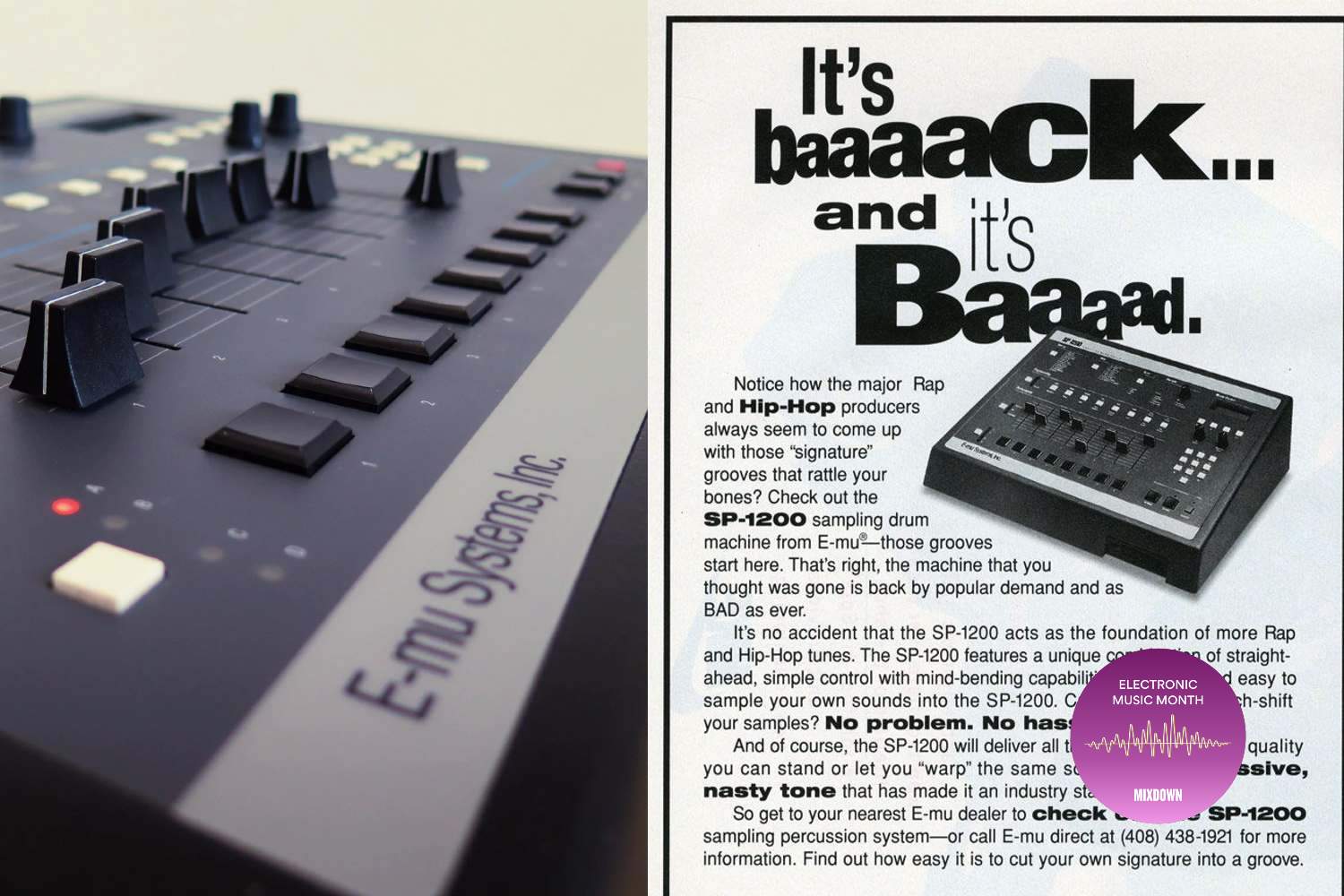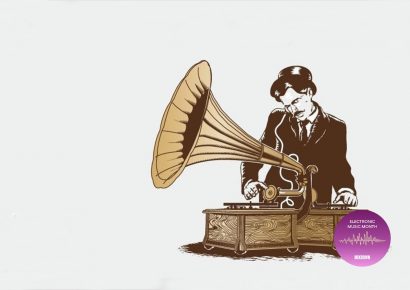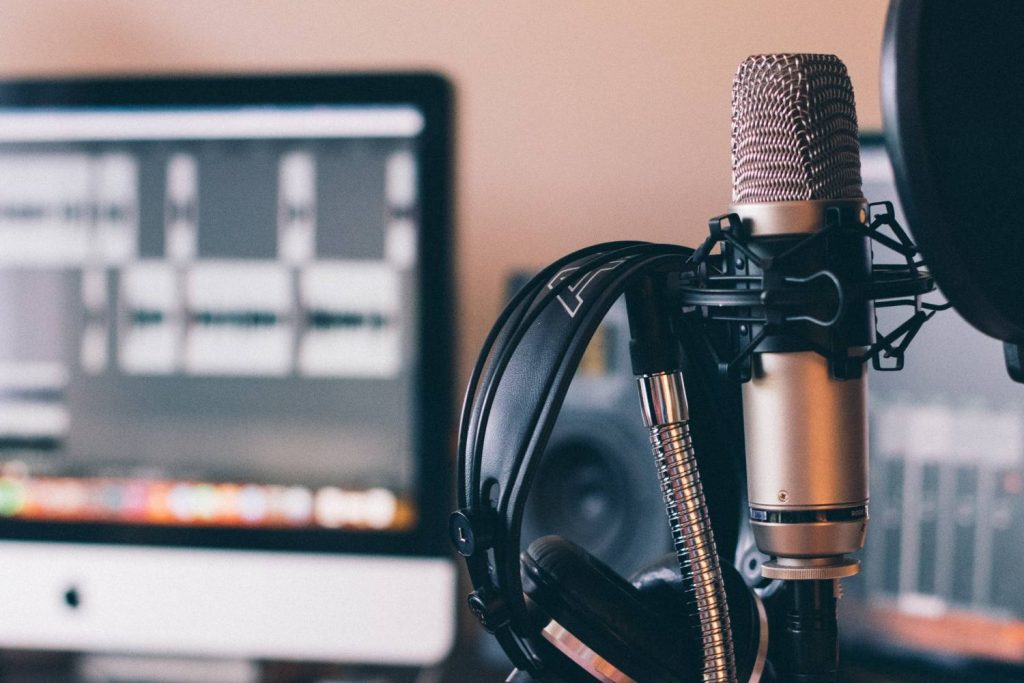The sampler, and the techniques behind French House music
When it comes to the design of musical instruments, the hardware, and software we use affect the ideas we create. There have been many examples in history where instruments like the LinnDrum, AKAI MPC, or the Roland TB-303 went on shape various musical styles – intentionally or not. These iconic pieces of gear each have a certain creative architecture and interface which resonates deeply with the user.
Read all the latest features, columns and more here.
So many say that limitation becomes a catalyst in the creative process, and while this may ring true in some cases, music production is still results-driven. So we will generally overcome the most archaic of interfaces if something sounds good. In this article, we’ll discuss the E-mu SP-1200 sampler and its role in French House music. Rather than focussing on the SP-1200 and the music made with it exclusively, we’ll look at the sampling techniques behind the genre.
The E-mu Systems SP-1200
The mid to late 1980s was an exciting time for innovation in music production equipment. E-mu Systems, the Silicon Valley manufacturer launched the SP-1200 in 1987. Moving on from the success of its predecessor, the more limited SP-12, the SP-1200 was more sampler-focussed. Although the $7500 price tag seems outlandish, the music industry was booming and studios had paid over 10 times the amount on samplers like the Synclavier, or the Fairlight CMI only a few years earlier. The limited sample memory gave rise to the practice of sampling records at 45 RPM to maximise the instrument’s potential.
Once inside, the 12-bit, 26.040kHz sample rate also degraded these samples when pitched down again, resulting in the chunky LoFi sonic quality we came to know and love. This characteristic sound and the creative process involved made the SP-1200 a dream for producing hip hop, house, and other sample-based music styles.
Today, getting hold of a vintage SP-1200 isn’t impossible. but they have more than doubled in value. If you don’t want to pay collector prices for a vintage sampler still running on 3.5-inch floppy disks, there are other options like the Rossum SP-1200 or simply taking the software route.
Sampling in French House music
Like many thriving music scenes over the years, the French House movement was diverse both in sound and the production styles used on the records. Not every act became a pop sensation like Daft Punk or Bob Sinclar, but this doesn’t make their music any less relevant. The gritty drum loops and collage-like choppy sample stabs and chords we generally associate with this music style are a common thread running throughout. However, each act that rose to any level of prominence in their own right did so through having their own unique take on creating sounds.
Artists like Cassius, Telepopmusik, Mr. Oizo, St Germain, and Pepe Braddock each developed their own unique production style within the framework of dance music. While some rely on sampling more than others, there seems to be no limit to the level of sonic creativity this process inspires. An impressive range of definitive releases within this genre also achieved enough mainstream success to give rise to a global following. This transformed the way the music was consumed as things shifted from clubs and festivals to radio waves. The idea of writing music for an international audience created a platform for French EDM artists that followed like David Guetta, Justice, and Gesafellstein.
Approaching sampling from a dance perspective
Nearly 30 years later, the tools we have at our disposal are staggering in comparison to when Daft Punk was first breaking through with their classic Homework album. Everything in studio and on stage was done without a laptop in sight, using hardware samplers and sequencers that would seem clunky by today’s standards. What’s more, there were no sample or loop packs to simply download, and the patches on most hardware available were nowhere near the libraries we associate with current synth plugins. Although so much has changed, sampling as a discipline remains centred around the source material.
Whether your idea of juxtaposing and recontextualising audio is similar to hip hop or Musique concrète, the time and effort it takes to build your library is considerable. Over time, your ears become more adept at recognising useable material from the records or recordings you collect and the process becomes more personalised as your taste becomes more defined. For each song you create, the different selections of samples become like colour swatches as you find which sounds complement each other. Samples can create tonality, movement, or ambience and the beauty is each artist has their own approach and feel.
Open up your DAW
The best thing about sampling is the level of accessibility we have to samplers and music online today. There are some great software samplers native to most DAW systems, and more elaborate plugins like FXpansion Geist or Native Instruments Maschine have extensive sequencing capabilities too. Vintage-style sampler plugins such as the TAL Sampler can emulate some of the characteristics of early digital hardware like the E-mu or Fairlight samplers. Even the old EXS24 sampler from Apple Logic Pro 10.4.8 has amazing capabilities so there’s no excuse not to get started.
When listening to the intro, bridge, or pre-chorus on some of your favourite records, try to find a drum break where there are no other instruments playing. Solo instrument loops and samples are ideal because you can manipulate them to a far greater degree. Once you’ve found the pitch or tempo you like, set up the loop markers. Remember that ending the audio section slightly before the downbeat, or leaving a small gap of silence can make the loop feel more human. Listen carefully to the drum loops on your favourite Moodyman record and you’ll get the idea.
Check out the birth of house and acid house here.







